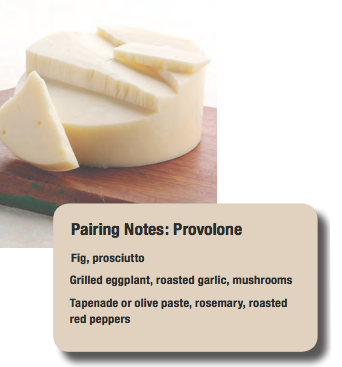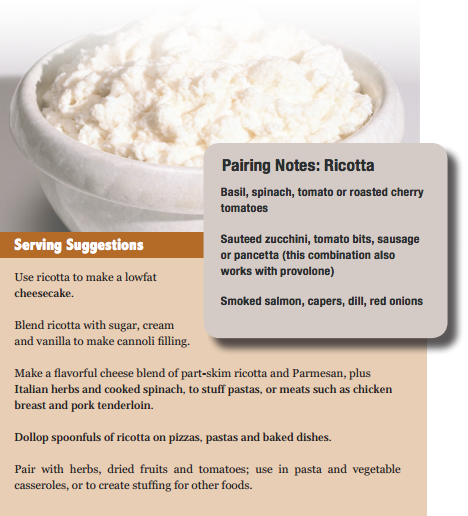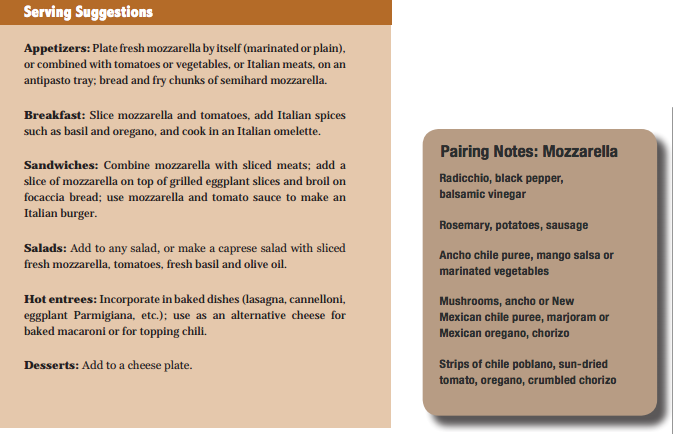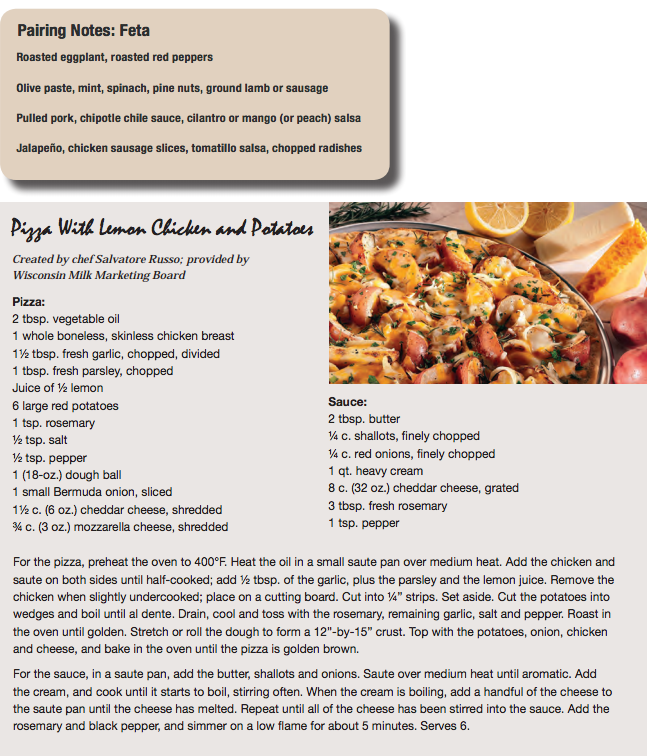 Cheddar
Cheddar
Information provided by Mark Todd (aka “The Cheese Dude”), consultant for the California Milk Advisory Board
The most popular cheese in the world, cheddar is named after the Cheddar Gorge in England, where it was first developed by cheese makers. Cheddar
describes a family of semihard and hard cheeses, offering a range of flavors, from mild to very sharp. Mild cheddar is aged 30 to 90 days; medium cheddar is aged 90 days to six months; and aged or sharp cheddar is aged for six months or longer. Cheddars can age for a decade or more under ideal conditions, and they develop more intense flavors, different textures and cooking properties as they age, so it’s important to know the age of the cheddar. When wrapped in wax, the color of the wax denotes the flavor of the cheese: clear wax for mild, red for medium and black for sharp.
Cheddar is available natural or colored. The coloring is derived from the achiote plant’s annatto seed. This version adds color to dishes, particularly when melted and browned. Creamy white and marbled cheddars are also available. The texture of cheddar is smooth and firm, but becomes more granular and crumbly as it ages. Being a whole-milk cheese, cheddar melts well, but due to its slightly lower moisture content, it does not flow as well as whole-milk mozzarella. It does, however, have more flavor.
Parmesean
Information provided by the Wisconsin Milk Marketing Board.
Known as the king of Italian cheeses, Parmesan originated in the Reggio and Parma regions of Italy. Its flavor is sweet, buttery and nutty compared to the sharper and more piquant flavor of Romano, and its flavor intensifies with age. Parmesan is made from part-skim milk and has a granular texture. In Italy, it’s common to serve Parmesan for dessert with fresh figs, walnuts and a sweet red wine.
Note that some commercially grated cheeses contain anticaking ingredients that prevent them from incorporating completely into sauces. Freshly grated cheese can produce smoother sauces.


Provolone
Information provided by the Wisconsin Milk Marketing Board

Provolone producers use more and different cultures to make provolone, compared to mozzarella. These cultures result in fuller flavors and allow provolone to age well. The flavor is slightly piquant when young, and becomes sharper as it ages; the firm texture becomes granular with age. Like mozzarella, it is a pasta filata cheese, meaning that the cheese curds are kneaded and pulled as opposed to being stirred during its creation; this creates the pull when the cheese melts.
In earlier times, Italian cheese makers heated curing rooms with wood fires, which imparted a slightly smoky flavor to the cheese; today, both smoked and unsmoked varieties are available.
Ricotta
Information provided by the Wisconsin Milk Marketing Board
Italian cheese makers originally produced ricotta from the whey that remained after making mozzarella and provolone. They added lactic acid or vinegar to the whey and reheated it almost to boiling (ricotta means “recooked”); this process caused the curds to separate and rise to the surface, where they were skimmed off and drained.
Available in nonfat to whole-milk varieties, ricotta has a milky, delicate, mild, fresh flavor with a hint of sweetness, and offers a creamy yet slightly grainy curd. Whey or part-skim ricotta provides the firmest texture for stuffing in dishes such as lasagna, while wholemilk ricotta is softer and creamier, well-suited to being encased in ravioli or tortellini. Ricotta is also an excellent cooking cheese because of its cohesive
texture, which binds ingredients.
Mozzarella
Information provided by Mark Todd (aka “The Cheese Dude”), consultant for the California Milk Advisory Board
Mozzarella originated in Italy, as both a fresh, soft cheese with a high moisture content, and as a lower-moisture semihard variety. Thanks to the popularity of pizza, it’s the second most-popular cheese in the United States. Fresh mozzarella can be formed in small white balls (bocconcini) or larger forms, and is usually packed in water; it has a delicate flavor and a soft, creamy texture. Semihard mozzarella is creamy white in color, and may be produced in balls or blocks. Mozzarella has a mild, milky flavor and a smooth, elastic texture. Fresh mozzarella is easy to slice and typically served uncooked; semihard mozzarella is easily sliced, cubed or shredded, and often added on top of foods to be cooked.
Mozzarella is available in part-skim and whole-milk varieties, and these two types cook differently. Whole-milk cheeses melt and flow well, but resist browning; part-skim cheeses brown readily, but do not flow to cover well. A blend of the two will give the desired effect of browning and flowing to cover a pizza crust or other dish. Also try adding smoked mozzarella to the menu; a small amount in any dish gives great depth of flavor.

Feta
Information provided by Adam Buholzer, vice president of production, Klondike Cheese Company; and the Wisconsin Milk Marketing Board
Originally a Greek cheese, feta was often made with sheep or goat milk, but now is commonly made in the United States with cow milk. Feta doesn’t melt and provides a piquant tang to dishes; the versatile cheese is most commonly used in salads. Feta is also available in flavored varieties, such as tomato-basil or herb. Cheese makers refer to feta as “pickled” because after formation it’s packed in brine, which preserves the cheese for approximately six months longer than most fresh cheeses. The result is a tart, salty flavor with a crumbly, moist texture.















